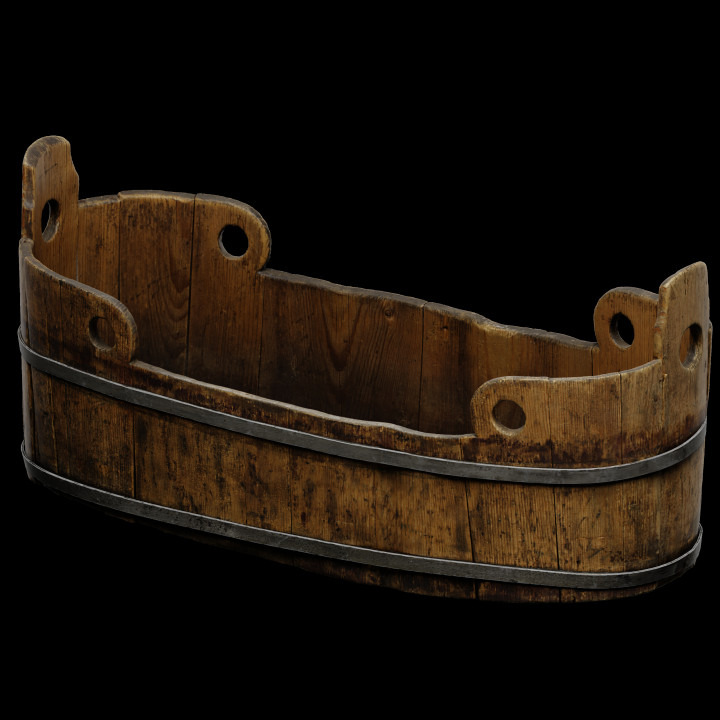
Baby bathtub - "compact"
myminifactory
A wooden stave vessel oval in shape which served as a bathtub for bathing little babies. The item found its way to the collection of the Tatra Museum in 1953 together with the collection of Stefan Szymański.Stefan Szymański (1884–1942), a physiologist, managed the artificial pneumothorax institute at the Social Insurance Institution in Warsaw. He often visited Zakopane. During the years 1905–1939 he collected specimens of folk art and objects used in everyday life by highlanders in the Podhale region. He collected folk art artefacts in a highlander's cottage in Zakopane, which was called “Tea” from the first letters of his mother's names (Teodozja Anna).Stefan Szymański wanted to hand over his collections to one of the capital's museums. He died in 1942 and his younger brother Tadeusz, who was also in love with the culture of Podhale, inherited the folk-art collection. In 1951, he bequeathed it to the Tatra Museum. The collection numbering 260 artefacts was finally transferred to the museum in 1953.Only babies were bathed in this kind of bathtub, known locally as a compact . Great importance and ritualistic significance were attached to the first bath immediately after childbirth. The midwife responsible for this bath was called a babica. The activities performed at that time were thought to have a positive impact on the child's future. Wanting the child to stay healthy and pretty, milk was poured into the water or a pinch of salt was added. After bathing, the water was poured into a place scarcely visited, over the side of kompacka where the baby kept its feet. It was commonly believed that if somebody did not follow such stipulations it might have had a bad effect on the child's health. In the ethnographic literature about the Podhale region one can read about the custom that was still present around the middle of the 19 thcentury. According to this routine, an infant was constantly bathed in the same water in which it had been bathed for the first time. It was believed that changing the water could deprive the child of its strength . [ Changes in the educational environment of the peripheral village. ] Study of the village of Ciche Górne in the Nowy Targ district [ A study of the village of Ciche Górne in Nowy Targ district ]. Wrocław 1971, p. 69]. The older the children were, the less care was taken about their hygiene and they were washed less and less often.It happened that other equipment served as the bathtub for the child, like for example, a pail used for washing pots or a trough in which dough was kneaded. There were also reverse situations. When children grew up and a compact was no longer needed, they found a new application in the thrifty highlander household.The bathtub is oval in shape. It was made of nineteen spruce staves of different widths (from 2 to 16 cm wide), which are inserted into the groove – wetor– cut along the rim of the vessel bottom, and then braced with two iron hoops. Two planks cut into an oval shape were reserved for the bottom of the vessel. Two opposite staves, located on the longitudinal axis of the vessel, are longer than the others, and in each of them a round hole with a diameter of 3.5 cm was cut out that functioned as handles. The staves in their immediate vicinity are also slightly higher than the remaining ones, and those on the far ends have an oval finish and holes bored all the way through them. They certainly give the vessel an aesthetic appearance, but it can be assumed that they also offered practicalities.From the inside, the bottom of the vessel shows signs of burns, which proves that the presented compact was also used for other purposes.
With this file you will be able to print Baby bathtub - "compact" with your 3D printer. Click on the button and save the file on your computer to work, edit or customize your design. You can also find more 3D designs for printers on Baby bathtub - "compact".
